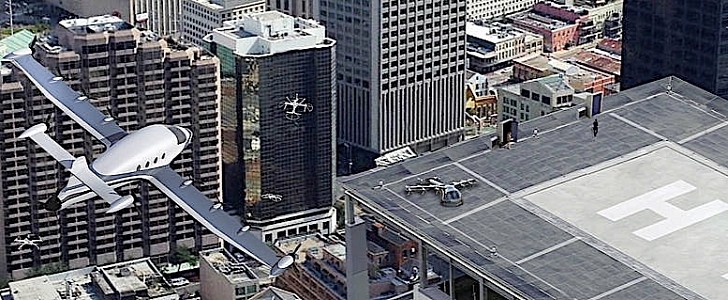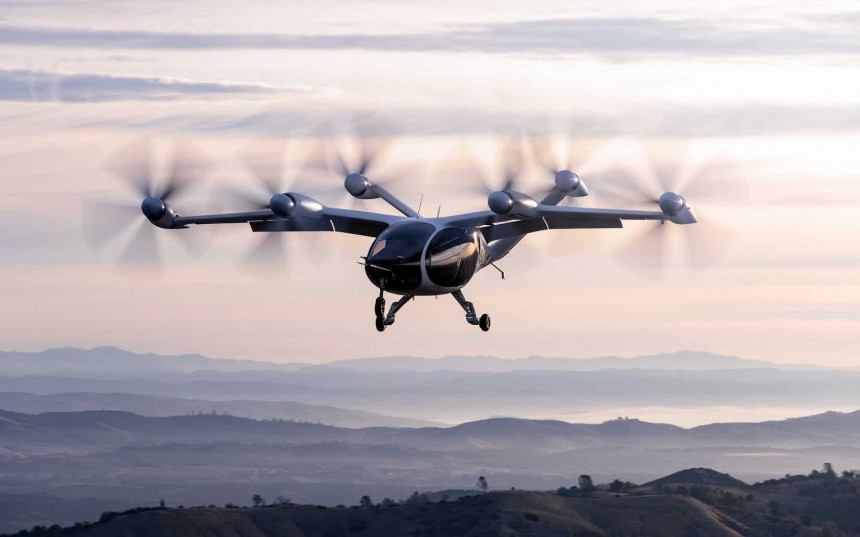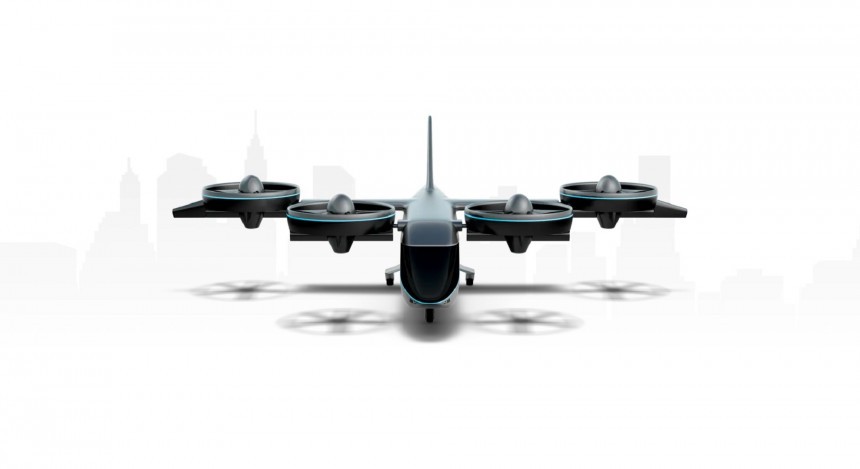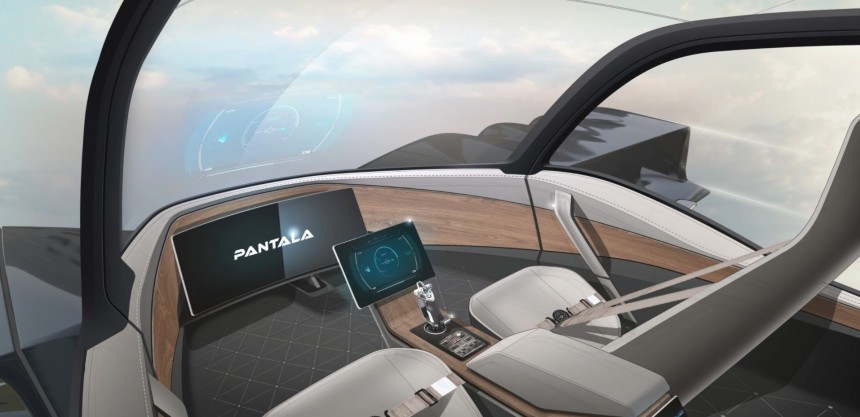For several years now there’s been increasing chatter about the future of public transportation, and the massive changes lying ahead. And by that we don’t mean the electrification of the auto industry, but the rise to power of vertical takeoff and landing vehicles.
What started long ago as an idea of creating cars that can also fly very rapidly morphed in recent time into an idea of creating drone-like machines that can carry people over the increasingly congested cities.
That way of moving about is something we’ve seen time and time again depicted in sci-fi literature and movies (The Fifth Element, anyone?), and to be honest some of us never thought it would come to pass during our life time. Yet, with rapid advancements made in this nascent industry, it’s becoming increasingly clear that advanced air mobility, as the concept of VTOL transportation is also known, should be upon us in a matter of a few decades.
But creating a safe environment for VTOLs goes far beyond building the machines to carry people to and fro through the air. Our society, despite the large number of airplanes flying about, is mostly a land-based one and, at least as far as cities are concerned, all the traffic rules and ideas have been designed around that.
VTOLs would need an entirely new set of rules and technologies to govern their existence and this, not physical hurdles, is all that stands in their way. But not for long, as work on changing that has already begun in several parts of the world.
Here in the U.S., NASA is the one that took it upon itself to develop an air traffic management system for air mobility tech. The space agency, increasingly involved in things that happen here on Earth, is working on something called ATM-X, or Air Traffic Management eXploration.
The project is meant to develop “innovative technology solutions that remove barriers to transforming today’s air transportation system and enabling new aircraft's large-scale access, while also improving current aircraft operations.” The plan is to gift the world, sometime soon, with the “digitally-integrated air transportation system” it needs to get VTOLs going, be them in the form of delivery drones, air taxis, or whatever.
What’s important to note is that eXploration is only going started, but it’s moving really fast. It kicked off in June 2020 and by the end of next year it should be ready to be put through its paces in a series of demonstrations.
The concept integrates all the different elements that should work in sync to allow for safe air transportation, including cloud computing, communication systems, and even autonomous technologies. And that means a large number of industry players, including the FAA, will be brought on board to make it a reality.
eXploration has four major subprojects in the oven, namely the Digital Information Platform, Urban Air Mobility Airspace Management, Pathfinding for Airspace with Autonomous Vehicles, and Extensible Traffic Management.
The Digital Information Platform is being devised as the place where all available and relevant data for VTOL flying, regardless of its source, is stored to be consulted by interested parties. “This capability will provide necessary data for airspace management and users of the airspace system of the future,” NASA says.
The Urban Air Mobility Airspace Management is designed to come up with the required technologies needed to handle an increasingly crowded urban airspace, especially for machines flying below 5,000 feet (1,5 km).
Pathfinding for Airspace with Autonomous Vehicles is a fancy name for a team working on “developing increasingly autonomous aircraft that will revolutionize how we transport goods across the United States,” or more precisely on creating the tools needed for the operation of remotely-piloted or autonomous civilian drones.
Last, but not least, comes the Extensible Traffic Management subproject, which aims to set up the procedures for allowing “routine access of unmanned aircraft to our national airspace.”
eXploration aims to come up with these solutions by 2045, and work on it is being conducted by the Ames, Glenn, and Langley Research Centers. It is however open to all interested parties who feel they have some great ideas to bring to the table.
That way of moving about is something we’ve seen time and time again depicted in sci-fi literature and movies (The Fifth Element, anyone?), and to be honest some of us never thought it would come to pass during our life time. Yet, with rapid advancements made in this nascent industry, it’s becoming increasingly clear that advanced air mobility, as the concept of VTOL transportation is also known, should be upon us in a matter of a few decades.
But creating a safe environment for VTOLs goes far beyond building the machines to carry people to and fro through the air. Our society, despite the large number of airplanes flying about, is mostly a land-based one and, at least as far as cities are concerned, all the traffic rules and ideas have been designed around that.
VTOLs would need an entirely new set of rules and technologies to govern their existence and this, not physical hurdles, is all that stands in their way. But not for long, as work on changing that has already begun in several parts of the world.
The project is meant to develop “innovative technology solutions that remove barriers to transforming today’s air transportation system and enabling new aircraft's large-scale access, while also improving current aircraft operations.” The plan is to gift the world, sometime soon, with the “digitally-integrated air transportation system” it needs to get VTOLs going, be them in the form of delivery drones, air taxis, or whatever.
What’s important to note is that eXploration is only going started, but it’s moving really fast. It kicked off in June 2020 and by the end of next year it should be ready to be put through its paces in a series of demonstrations.
The concept integrates all the different elements that should work in sync to allow for safe air transportation, including cloud computing, communication systems, and even autonomous technologies. And that means a large number of industry players, including the FAA, will be brought on board to make it a reality.
The Digital Information Platform is being devised as the place where all available and relevant data for VTOL flying, regardless of its source, is stored to be consulted by interested parties. “This capability will provide necessary data for airspace management and users of the airspace system of the future,” NASA says.
The Urban Air Mobility Airspace Management is designed to come up with the required technologies needed to handle an increasingly crowded urban airspace, especially for machines flying below 5,000 feet (1,5 km).
Pathfinding for Airspace with Autonomous Vehicles is a fancy name for a team working on “developing increasingly autonomous aircraft that will revolutionize how we transport goods across the United States,” or more precisely on creating the tools needed for the operation of remotely-piloted or autonomous civilian drones.
eXploration aims to come up with these solutions by 2045, and work on it is being conducted by the Ames, Glenn, and Langley Research Centers. It is however open to all interested parties who feel they have some great ideas to bring to the table.




























